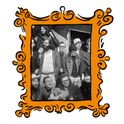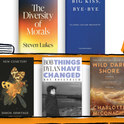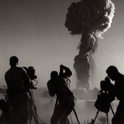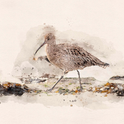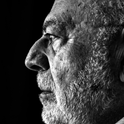So much has been written about the royal wedding and the new Duke and Duchess of Cambridge that it might be thought no more is needed. Prince William has issued a plea for them to enjoy some years of peace, and most normal people, monarchist or not, have every sympathy for this. Yet at the same time as praising the former Kate Middleton, journalists have, in the usual fashion, cheered with one breath and sniped with the other. How long before this discreet and sensible young woman starts to get attacked as “boring”? However much she may try to maintain a low profile, the world hungers for more pictures and more stories. Whatever she supports will become high-profile, and this is what makes me think that, besides her admirable concern for the victims of bullying, she actually could do something different and remarkable.
The great glory of this country is its creativity—yet ever since the death of Prince Albert, the arts have had no royal champion. Prince Charles’s forays into modern architecture have been contentious, and possibly unhelpful, and apart from these no royal person has done much beyond trying to flog dreadful books (Fergie’s Budgie the Helicopter anyone?) written by themselves. The Queen is known to have watched films in which she or her father have been portrayed, and the Royal Variety Show is an annual trashfest which, while it may do good for charity, does little to present the nation’s real talent. It is known that a selection of books is sent up to Balmoral every summer, but what these are and whether they are read remains secret. When Camilla, Duchess of Cornwall, revealed last year that she read every novel on the Orange prize shortlist, there were audible gasps of amazement from the audience who tended to assume that royalty never reads anything more than Horse and Hound. At a stroke, much of the audience (which had been wondering quite what she was doing at the ceremony) felt warmly interested in her.
This is very much what I would like to see the new Duke and Duchess doing. Both studied history of art at university, so each must, presumably, have a keen interest in the subject. Catherine Middleton wrote her thesis on Lewis Carroll, whose intellectual playfulness still challenges adult readers. How splendid it would be if, as the most academically distinguished royals ever, they were to be seen actually reading contemporary books! Alan Bennett imagined what might happen if the Queen discovered literature in The Uncommon Reader, but in real life, the effect could be very different. How marvellous if, instead of turning out for the latest James Bond premiere, the couple were to turn up at the National Theatre, or the RSC or, more daringly, the Almeida and the Donmar! Their choice of an obscure piece of Welsh music at their wedding was intriguing, so think, if they were to be found listening to music at the Festival Hall or the Wigmore. What a shot in the arm it would be for beleaguered musicians! Has any of them even been to Tate Britain—or Tate Modern? They need not say a word—just to be seen doing these things would be enough.
Many of today’s writers and artists are anti-monarchist, not only because inherited privilege seems outmoded and wrong but because the royal family have presented themselves as philistines, and low-brow louts who preferred It’s a Knockout to the Booker prize. Were that to change, so would the hearts and minds of many influential people—people who have as much to say as the tabloids, and whose voices might last longer. Support for the arts was once an intrinsic part of royal and aristocratic life, and mutually beneficial; now it has shrunk to the somewhat dubious honour of a poet laureateship and a few portrait commissions. Not every author feels as Dr Johnson did about his own patron, Lord Chesterfield, that he is "one who looks with unconcern on a man struggling for life in the water, and, when he has reached ground, encumbers him with help."
It’s often forgotten that Queen Victoria was herself a gifted amateur pianist (who had a session with Chopin, no less, when he came to England). She also wrote books, and painted. Her marriage was probably the last true royal love-match, and it helped to transform the cultural life of the nation. Is it too much to hope that William and Catherine genuinely represent a renaissance of what could be best about royalty? Probably. But then, like other artists, one can dream.
Amanda Craig's most recent novel is Hearts and Minds (Abacus). Click here to visit her website
A proposal for William and Kate
May 04, 2011

William and Kate both studied art history at university—could they convert this interest into supporting contemporary British art?

